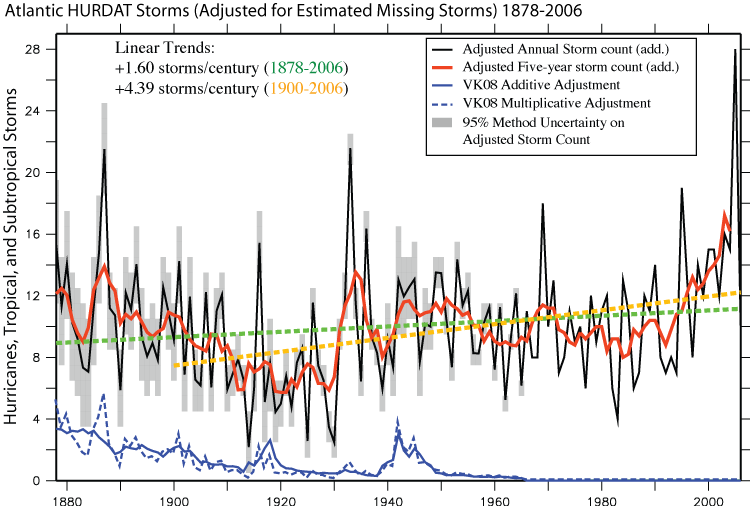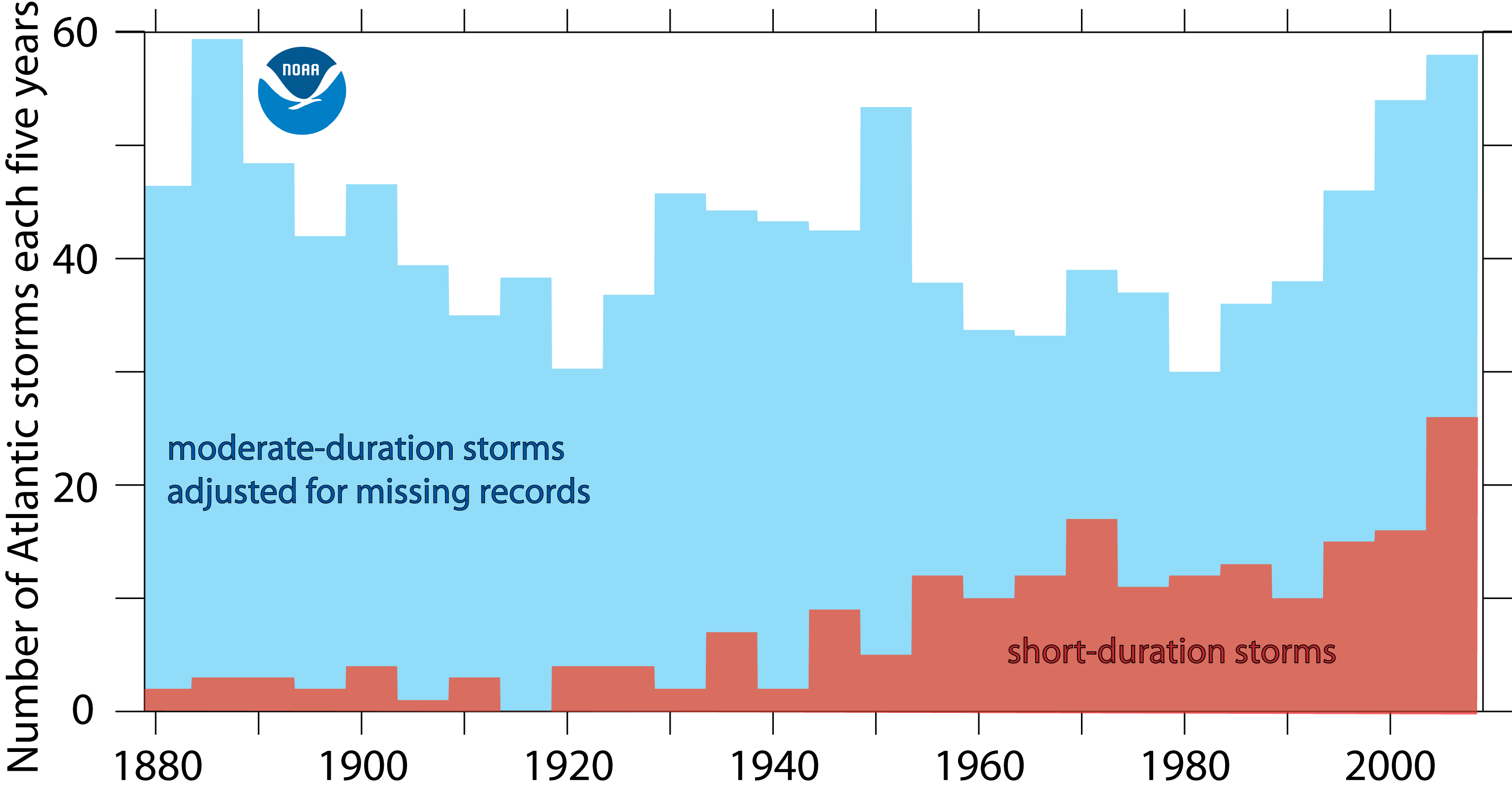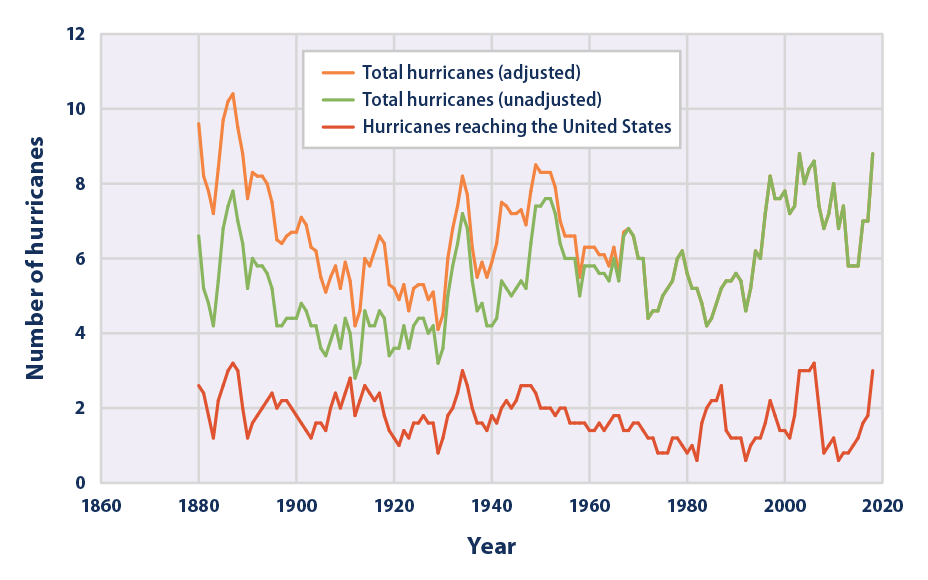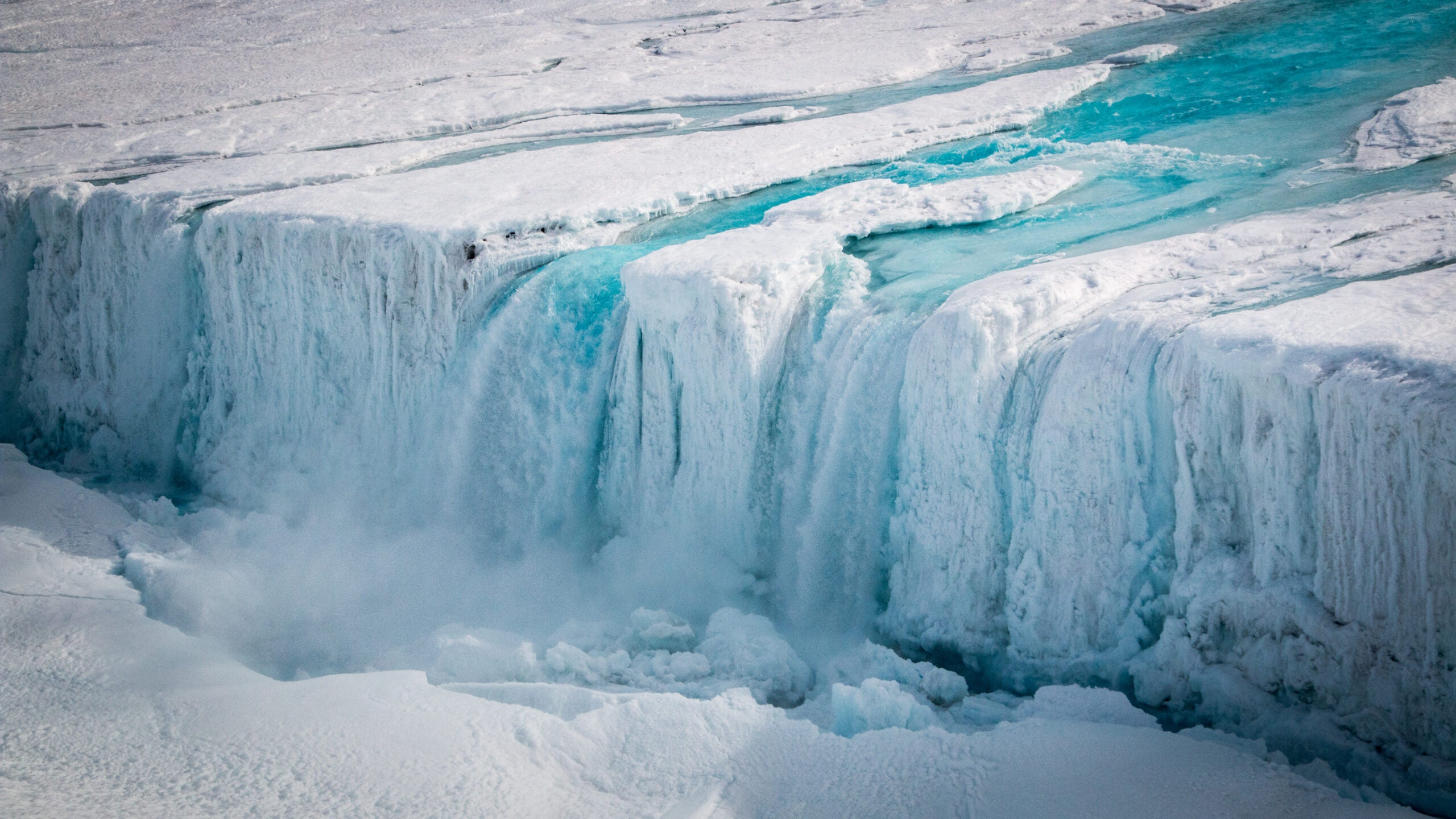Who is "them" and why do you call them assholes?I'm gonna take my snowmobiles to Costa Rica. When those assholes say something, I assume the opposite to come in.
Navigation
Install the app
How to install the app on iOS
Follow along with the video below to see how to install our site as a web app on your home screen.

Note: This feature currently requires accessing the site using the built-in Safari browser.
More options
You are using an out of date browser. It may not display this or other websites correctly.
You should upgrade or use an alternative browser.
You should upgrade or use an alternative browser.
Heat to soar to record levels in next 5 years.
- Thread starter odanny
- Start date
EMH
Diamond Member
- Apr 5, 2021
- 14,088
- 9,710
- 2,138
crock posted a photo of "liquid water" from Antarctica on the last page but WILL NOT CITE WHERE or THE SOURCE...
crock is typical of the Co2 fraud, the use of doctored/misleading photos and videos is common with the Co2 fraud. The whole coral bleaching issue was outed years ago as bleach being squirted into coral, that coral itself is quite robust and doesn't change at all in water 20+ F warmer....
The Antarctic sea ice claim is dubious since it is from a homO satellite that had accusations of fraud intent when it was launched. The all time high for AA sea ice remains 2014 and likely has been eclipsed but we are being lied to because the Co2 fraud really has absolutely nothing....
crock is typical of the Co2 fraud, the use of doctored/misleading photos and videos is common with the Co2 fraud. The whole coral bleaching issue was outed years ago as bleach being squirted into coral, that coral itself is quite robust and doesn't change at all in water 20+ F warmer....
The Antarctic sea ice claim is dubious since it is from a homO satellite that had accusations of fraud intent when it was launched. The all time high for AA sea ice remains 2014 and likely has been eclipsed but we are being lied to because the Co2 fraud really has absolutely nothing....
CO2 was 60% lower when Greenland had no ice.I've answered all these stupid questions and so have others. You ignore the answers, probably because they don't reflect well on you personally.
Land.
There are glaciers in Alaska north and south of the Arctic Circle
They are called hurricanes. And they aren't.

Historical Atlantic Hurricane and Tropical Storm Records – Geophysical Fluid Dynamics Laboratory
Historical Changes in Atlantic Hurricane and Tropical Storms Gabriel A. Vecchi and Thomas R. Knutson How well do we know the historical cyclone record? Observational records of tropical storm and hurricanes are essential in order to discern how climatic changes have influenced tropical storms...www.gfdl.noaa.gov
Historical Atlantic Hurricane and Tropical Storm Records – Geophysical Fluid Dynamics Laboratory
Historical Changes in Atlantic Hurricane and Tropical Storms Gabriel A. Vecchi and Thomas R. Knutson How well do we know the historical cyclone record? Observational records of tropical storm and hurricanes are essential in order to discern how climatic changes have influenced tropical storms...www.gfdl.noaa.gov

Climate Change Indicators: Tropical Cyclone Activity | US EPA
This indicator examines the frequency, intensity, and duration of hurricanes and other tropical storms in the Atlantic Ocean, Caribbean, and Gulf of Mexico.www.epa.gov
Bullshit


Antarctica is leaking from the inside out
Scientists have discovered that Antarctica is melting from the inside out. They examine what this means for sea-level rise.www.popsci.com
I have attempted to debate your bullshit data on multiple occasions. YOU are the one who bails. "It's all fudge" is the ONLY thing we ever get from you. That's not a debate. That's you being an ignorant, cowardly asshole.
CO2 didn't freeze anything.
Now if you ask us these stupid fucking questions ever again I'm going to send my grand daughter over to teach you some lessons you should have had a great long while ago. And she's not yet 2.
Call me when palm trees return to Alaska.
- May 20, 2009
- 144,270
- 66,584
- 2,330
Everyone could have seen this coming.
The News
Global temperatures are likely to soar to record highs over the next five years, driven by human-caused warming and a climate pattern known as El Niño, forecasters at the World Meteorological Organization said on Wednesday.
The record for Earth’s hottest year was set in 2016. There is a 98 percent chance that at least one of the next five years will exceed that, the forecasters said, while the average from 2023 to ’27 will almost certainly be the warmest for a five-year period ever recorded.
Why It Matters: Every fraction of a degree brings new risks.
Even small increases in warming can exacerbate the dangers from heat waves, wildfires, drought and other calamities, scientists say. Elevated global temperatures in 2021 helped fuel a heat wave in the Pacific Northwest that shattered local records and killed hundreds of people.
El Niño conditions can cause further turmoil by shifting global precipitation patterns. The meteorological organization said it expected increased summer rainfall over the next five years in places like Northern Europe and the Sahel in sub-Saharan Africa and reduced rainfall in the Amazon and parts of Australia.
The organization reported that there is also a two thirds chance that one of the next five years could be 1.5 degrees Celsius, or 2.7 degrees Fahrenheit, hotter than the 19th-century average.
That does not mean that the world will have officially breached the aspirational goal in the Paris climate agreement of holding global warming to 1.5 degrees Celsius. When scientists talk about that temperature goal, they generally mean a longer-term average over, say, two decades in order to root out the influence of natural variability.
Many world leaders have insisted on the 1.5-degree limit to keep the risks of climate change to tolerable levels. But nations have delayed so long in making the monumental changes necessary to achieve this goal, such as drastically cutting fossil-fuel emissions, that scientists now think the world will probably exceed that threshold around the early 2030s.
Background: La Niña, a cooling influence, is on the way out.
Global average temperatures have already increased roughly 1.1 degrees Celsius since the 19th century, largely because humans keep burning fossil fuels and pumping heat-trapping gases like carbon dioxide into the atmosphere.
But while that overall upward trend is clear, global temperatures can bounce up and down a bit from year to year because of natural variability. For instance, a cyclical phenomenon in the Pacific Ocean, the El Niño-Southern Oscillation, causes year-to-year fluctuations by shifting heat in and out of deeper ocean layers. Global surface temperatures tend to be somewhat cooler during La Niña years and somewhat hotter during El Niño years.
The last record hot year, 2016, was an El Niño year. By contrast, La Niña conditions have dominated for much of the past three years: while they’ve been unusually warm, they were still slightly below 2016 levels. Now, scientists are expecting El Niño conditions to return later this summer. When combined with steadily rising levels of greenhouse gases in the atmosphere, that will most likely cause temperatures to accelerate to new highs.

Heat Will Likely Soar to Record Levels in Next 5 Years, New Analysis Says
The World Meteorological Organization forecast “far-reaching repercussions for health, food security, water management and the environment.”www.nytimes.com
More predictions!
Global Ice Age...check
Ozone Layer hole will kill all life on Earth....check
Acid rain will kill all life on Earth....check
Arctic Ice free...check
Snow a thing of the past...check
Coral all bleached...check
No more polar bears...check
Guam tipped over.....check
Wow!
Hard to beat this track record
- May 20, 2009
- 144,270
- 66,584
- 2,330
I've answered all these stupid questions and so have others. You ignore the answers, probably because they don't reflect well on you personally.
Land.
There are glaciers in Alaska north and south of the Arctic Circle
They are called hurricanes. And they aren't.

Historical Atlantic Hurricane and Tropical Storm Records – Geophysical Fluid Dynamics Laboratory
Historical Changes in Atlantic Hurricane and Tropical Storms Gabriel A. Vecchi and Thomas R. Knutson How well do we know the historical cyclone record? Observational records of tropical storm and hurricanes are essential in order to discern how climatic changes have influenced tropical storms...www.gfdl.noaa.gov
Historical Atlantic Hurricane and Tropical Storm Records – Geophysical Fluid Dynamics Laboratory
Historical Changes in Atlantic Hurricane and Tropical Storms Gabriel A. Vecchi and Thomas R. Knutson How well do we know the historical cyclone record? Observational records of tropical storm and hurricanes are essential in order to discern how climatic changes have influenced tropical storms...www.gfdl.noaa.gov

Climate Change Indicators: Tropical Cyclone Activity | US EPA
This indicator examines the frequency, intensity, and duration of hurricanes and other tropical storms in the Atlantic Ocean, Caribbean, and Gulf of Mexico.www.epa.gov
Bullshit


Antarctica is leaking from the inside out
Scientists have discovered that Antarctica is melting from the inside out. They examine what this means for sea-level rise.www.popsci.com
I have attempted to debate your bullshit data on multiple occasions. YOU are the one who bails. "It's all fudge" is the ONLY thing we ever get from you. That's not a debate. That's you being an ignorant, cowardly asshole.
CO2 didn't freeze anything.
Now if you ask us these stupid fucking questions ever again I'm going to send my grand daughter over to teach you some lessons you should have had a great long while ago. And she's not yet 2.
China builds 2 NEW coal plants ever week! Think of the CO2! Think of the Soot that is largely responsible for the albedo!! China is the problem
Everyone could have seen this coming.
The News
Global temperatures are likely to soar to record highs over the next five years, driven by human-caused warming and a climate pattern known as El Niño, forecasters at the World Meteorological Organization said on Wednesday.
The record for Earth’s hottest year was set in 2016. There is a 98 percent chance that at least one of the next five years will exceed that, the forecasters said, while the average from 2023 to ’27 will almost certainly be the warmest for a five-year period ever recorded.
Why It Matters: Every fraction of a degree brings new risks.
Even small increases in warming can exacerbate the dangers from heat waves, wildfires, drought and other calamities, scientists say. Elevated global temperatures in 2021 helped fuel a heat wave in the Pacific Northwest that shattered local records and killed hundreds of people.
El Niño conditions can cause further turmoil by shifting global precipitation patterns. The meteorological organization said it expected increased summer rainfall over the next five years in places like Northern Europe and the Sahel in sub-Saharan Africa and reduced rainfall in the Amazon and parts of Australia.
The organization reported that there is also a two thirds chance that one of the next five years could be 1.5 degrees Celsius, or 2.7 degrees Fahrenheit, hotter than the 19th-century average.
That does not mean that the world will have officially breached the aspirational goal in the Paris climate agreement of holding global warming to 1.5 degrees Celsius. When scientists talk about that temperature goal, they generally mean a longer-term average over, say, two decades in order to root out the influence of natural variability.
Many world leaders have insisted on the 1.5-degree limit to keep the risks of climate change to tolerable levels. But nations have delayed so long in making the monumental changes necessary to achieve this goal, such as drastically cutting fossil-fuel emissions, that scientists now think the world will probably exceed that threshold around the early 2030s.
Background: La Niña, a cooling influence, is on the way out.
Global average temperatures have already increased roughly 1.1 degrees Celsius since the 19th century, largely because humans keep burning fossil fuels and pumping heat-trapping gases like carbon dioxide into the atmosphere.
But while that overall upward trend is clear, global temperatures can bounce up and down a bit from year to year because of natural variability. For instance, a cyclical phenomenon in the Pacific Ocean, the El Niño-Southern Oscillation, causes year-to-year fluctuations by shifting heat in and out of deeper ocean layers. Global surface temperatures tend to be somewhat cooler during La Niña years and somewhat hotter during El Niño years.
The last record hot year, 2016, was an El Niño year. By contrast, La Niña conditions have dominated for much of the past three years: while they’ve been unusually warm, they were still slightly below 2016 levels. Now, scientists are expecting El Niño conditions to return later this summer. When combined with steadily rising levels of greenhouse gases in the atmosphere, that will most likely cause temperatures to accelerate to new highs.

Heat Will Likely Soar to Record Levels in Next 5 Years, New Analysis Says
The World Meteorological Organization forecast “far-reaching repercussions for health, food security, water management and the environment.”www.nytimes.com
How many new nuclear power plants should we build to support more air-conditioning?
Similar threads
- Replies
- 99
- Views
- 2K
- Replies
- 5
- Views
- 163
- Replies
- 39
- Views
- 963
Latest Discussions
- Replies
- 209
- Views
- 1K
- Replies
- 11
- Views
- 54
- Replies
- 71
- Views
- 665
Forum List
-
-
-
-
-
Political Satire 8051
-
-
-
-
-
-
-
-
-
-
-
-
-
-
-
-
-
-
-
ObamaCare 781
-
-
-
-
-
-
-
-
-
-
-
Member Usernotes 469
-
-
-
-
-
-
-
-
-
-